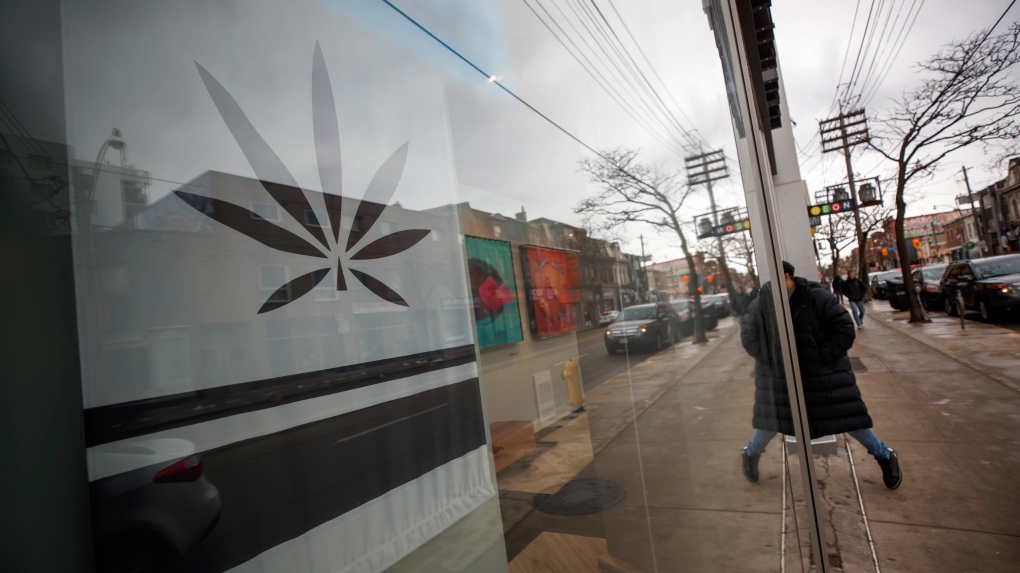
B.C. tenants evicted for landlord's use after refusing large rent increase to take over neighbouring suite
Ashley Dickey and her mother rented part of the same Coquitlam duplex in three different decades under three different landlords.
Before the legalization of cannabis, some who were opposed to the concept suggested that it could lead to more impaired driving, particularly among youth — a worry that was unwarranted, according to a new study that found that legalization has not been associated with changes in traffic injuries in Canada.
The study, led by University of British Columbia professor Dr. Russ Callaghan, looked at traffic injuries in youth before and after legalization occurred in 2018, and found no significant jump.
Researchers focused on Alberta and Ontario, which are the only two provinces that capture all emergency department visit data. Youth were defined as those 14 to 17 years old in Alberta and 16-to-18-year-olds in Ontario.
“Implementation of cannabis legalization has raised a common concern that such legislation might increase traffic-related harms, especially among youth,” Callaghan said in a press release. “Our results, however, show no evidence that legalization was associated with significant changes in emergency department traffic-injury presentations.”
The study, published in November in the journal Drug and Alcohol Dependence, states that following cannabis legalization, there was a decrease of 0.66 in the weekly average visits among youth drivers in Alberta to the emergency department. In Ontario, there was an increase in the weekly average of youth drivers presenting to the emergency department — but that increase was only by 0.09 visits.
In total, researchers looked at years of data to compile the numbers, from April 2015 to December 2019.
Callaghan said he was slightly surprised by the results.
“I predicted that legalization would increase cannabis use and cannabis-impaired driving in the population, and that this pattern would lead to increases in traffic-injury presentations to emergency departments,” he said.
“It is possible that our results may be due to the deterrent effects of stricter federal legislation, such as Bill C-46, coming into force shortly after cannabis legalization. These new traffic-safety laws imposed more severe penalties for impaired driving due to cannabis, alcohol, and combined cannabis and alcohol use.”
Part of the project was funded by a Canadian Institutes of Health Research Catalyst Grant, focused on researching cannabis.
There was a slightly higher increase in traffic injuries when it came to looking at all drivers instead of merely youth drivers: in Alberta the weekly average of visits increased by 9.17 after legalization, while in Ontario there was a weekly average increase of 28.93 visits. There were more than 52,000 and more than 186,000 drivers that suffered a traffic injury in that time period in Alberta and Ontario respectively.

Ashley Dickey and her mother rented part of the same Coquitlam duplex in three different decades under three different landlords.
MPP Sarah Jama was asked to leave the Legislative Assembly of Ontario by House Speaker Ted Arnott on Thursday for wearing a keffiyeh, a garment which has been banned at Queen’s Park.
A man who fell into a crevasse while leading a backcountry ski group deep in the Canadian Rockies has died.
A Montreal actress, who has previously detailed incidents she had with disgraced Hollywood producer Harvey Weinstein, says a New York Court of Appeals decision overturning his 2020 rape conviction is 'discouraging' but not surprising.
After Prime Minister Justin Trudeau said the federal government would still send Canada Carbon Rebate cheques to Saskatchewan residents, despite Saskatchewan Premier Scott Moe's decision to stop collecting the carbon tax on natural gas or home heating, questions were raised about whether other provinces would follow suit. CTV News reached out across the country and here's what we found out.
A new survey by Dalhousie University's Agri-Food Analytics Lab asked Canadians about their food consumption habits amid rising prices.
Charlie Woods failed to advance in a U.S. Open local qualifying event Thursday, shooting a 9-over 81 at Legacy Golf & Tennis Club.
Caleb Williams is heading to the Windy City, aiming to become the franchise quarterback Chicago has sought for decades.
A Montreal-area family confirmed to CTV News that the body of their loved one who died while on vacation in Cuba is being repatriated to Canada after it was mistakenly sent to Russia.

Mounties in Nanaimo, B.C., say two late-night revellers are lucky their allegedly drunken antics weren't reported to police after security cameras captured the men trying to steal a heavy sign from a downtown business.
A property tax bill is perplexing a small townhouse community in Fergus, Ont.
When identical twin sisters Kim and Michelle Krezonoski were invited to compete against some of the world’s most elite female runners at last week’s Boston Marathon, they were in disbelief.
The giant stone statues guarding the Lions Gate Bridge have been dressed in custom Vancouver Canucks jerseys as the NHL playoffs get underway.
A local Oilers fan is hoping to see his team cut through the postseason, so he can cut his hair.
A family from Laval, Que. is looking for answers... and their father's body. He died on vacation in Cuba and authorities sent someone else's body back to Canada.
A former educational assistant is calling attention to the rising violence in Alberta's classrooms.
The federal government says its plan to increase taxes on capital gains is aimed at wealthy Canadians to achieve “tax fairness.”
At 6'8" and 350 pounds, there is nothing typical about UBC offensive lineman Giovanni Manu, who was born in Tonga and went to high school in Pitt Meadows.
 A customer walks into a Cannabis dispensary on Queen St. in Toronto, Monday, Jan. 6, 2020. THE CANADIAN PRESS/Cole Burston
A customer walks into a Cannabis dispensary on Queen St. in Toronto, Monday, Jan. 6, 2020. THE CANADIAN PRESS/Cole Burston